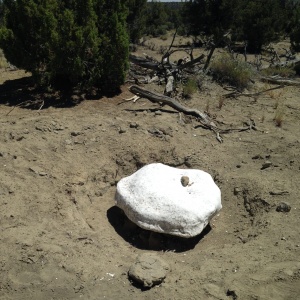Over the past few days I have been collecting acorns with another intern, as this year is looking like a better acorn harvest than the past few. We noticed that about half of the acorns had perfect 1/8″ circular holes in them, and tried to avoid them assuming some insect larvae had burrowed its way in. The next morning, while sitting at the computer, I heard a very subtle chewing sound reminding me strongly of one time when a rat tried to chew through under door carpet into my room. I looked at the paper bag holding all the acorns, and saw a fat little larvae wriggling its way through a perfectly round 1/8″ hole near the base of the bag.

I did some research online, and it turns out these are the larvae of the acorn weevil. A female acorn weevil lays an egg into a young acorn, and as the larvae hatches and develops it feeds on the inside of the acorn. Once the acorn drops, the larvae emerges from the acorn and burrows into the ground, where it will eventually develop into an adult.

Acorn weevil larva at home

Acorns with holes
At the bottom of the bag we found a couple dozen larvae squirming around. They are almost comical in the way they move, they are so fat and legless. We fed them to my mentor’s black legless lizards, which I’m sure enjoyed the feast of what is likely their natural prey after many years of eating pet store crickets.
Then we used float/sink test to try to separate the infested from the intact acorns, assuming that the acorns with larvae would be more hollow and therefore float. It seemed to work ok, because all the acorns that floated either had holes or looked generally unhealthy. However, every time we look at the bottom of the bucket with the remaining acorn there are a dozen or so more larvae wiggling around, so there are many infested acorns that the test did not filter out. But I’m sure the legless lizards are very happy.

Acorns floating or sinking

